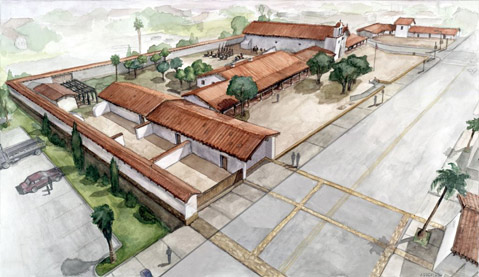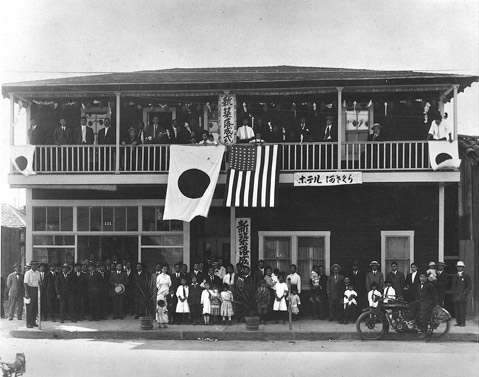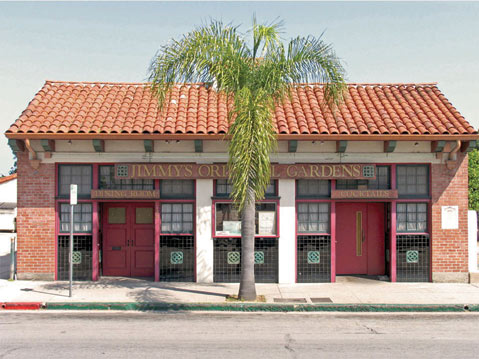Helping a Historic ‘Hood
Buildings and Cultures Preserved

Here are some of the structures and cultures under the S.B. Trust for Historic Preservation’s wing.
Bonilla House: Ranch manager, stagecoach driver, and Lobero Theatre musician Florentino Bonilla built this home in 1887 on the foundations of the old presidio, which the trust acquired with a donation from Pearl Chase in 1972. It may be moved in future years to be adjacent to the Cota-Know House as part of an education and visitor’s center.
Buenaventura Pico Adobe: Located behind the Presidio complex is this former 1850s-era home of Anita and Buenaventura Pico, whose grandfather Santiago came to California with the 1776 De Anza expedition. The cedar shingles and gabled roof show the transition between Mexican and American construction styles. It was purchased by the trust in 1976 from the Quentin Richard family.
Cota-Knox House: One of the oldest brick structures in town, José Lobero (namesake of the theater across the street) built this in 1871 for his mother-in-law, Francisca Cota, who died just six years later. It was later purchased by prominent physician Samuel Knox. It was purchased by the trust in 1976 from the Quentin Richard family.
Casa De la Guerra: Originally built 1819-1827 by former Presidio commander Captain José de la Guerra, this home across from De la Guerra Plaza and City Hall is an example of genteel Californio culture, with changing exhibits, lots of public gatherings, and even the Fiesta beer garden each August. It was donated by the Suski family to the trust in 1971, with restoration work going 1991-2006.
El Paseo: Donated to the trust in 1971 by the Suski family, then sold amid much controversy in 1989, and now owned by SIMA, the trust still holds a historic easement over the walls and ceilings of this mini-mall, which was built in 1922 and inspired Spanish Colonial Revival architecture throughout Southern California. Highlights include the St. Francis Ceiling (in the lobby outside of the El Paseo Restaurant); the Ranchero Room upstairs, where famous Western artists decorated the walls; the ornately decorated ceiling of the Gold Room inside the Wine Cask; and artist Edward Borein’s studio (now a private office).
El Presidio State Historic Park: A partial reconstruction on the exact site of the original European settlement in Santa Barbara, the Presidio features El Cuartel (the second-oldest building in California, not a replica), the Canedo Adobe, the chapel, commandante’s quarters, heritage gardens, and more. It’s the site of numerous festivals, concerts, lectures, and events throughout the year. Archaeological excavations began in 1965, the first lots were purchased by the trust in 1966, and initial reconstruction work occurred 1974-1981. Today, work on the northwest corner persists, and the trust continues to buy properties and convey them to the state park.

Japantown: Though largely located in buildings that were knocked down to make way for the reconstructed Presidio, the Japanese once settled around the Asakura Hotel on East Canon Perdido Street before internment during World War II displaced them. The trust has thrown a couple of Nihonmachi festivals and hosted a speaking series in their honor.

Jimmy’s Oriental Gardens: This lone remnant of a once thriving Chinatown — complete with joss houses and opium dens — was owned for more than half a century by the Chung family, who sold it to the trust in 2007. It now houses Three Pickles Deli, and the bar will reopen this summer, along with exhibits reflecting the neighborhood’s Asian-American history occupying the walls.
Hoff Hospital Building: These remnants of an old military hospital located along Las Positas Street now house the Anacapa School, whose students frequently visit the presidio for educational experiences.
Moullet House: Now home to sandwich-slinging lunch spot Panino, this 1896 house where Lino Castagnola lived was purchased by the trust in 1977.
Rochin Adobe: Built as an American adobe in 1856 with remnants of the crumbling presidio walls by José María Rochín, whose wife descended from first presidio commander José Francisco Ortega, Leontine Phelan lived there and welcomed visitors in to see her family’s artifacts 1924-1994. The trust purchased it in 1995.
Santa Inés Mission Mills: The trust expanded their work to the Santa Ynez Valley by purchasing this Solvang property that features the grist and fulling mills built by Mission Santa Inés in 1820. Olive oil from adjacent orchards was produced for the first time in 2012, with plans for more production, hiking trails, and interpretive signs on the horizon.
School of the Arts: Founded in the 1920s by the Community Arts Association, this collection of buildings — including the Alhecama Theatre, Schott residence (home to Zaytoon Lebanese Cuisine), and Adult Education Center (home to La Playa Azul Café), and today’s Presidio Research Center — continued to house working artists into the 2000s. It was acquired by the trust in 1982.
U.S. Post Office: Though owned by the federal government, the trust holds historic easements over the architecture of this imposing building on Anacapa Street.



